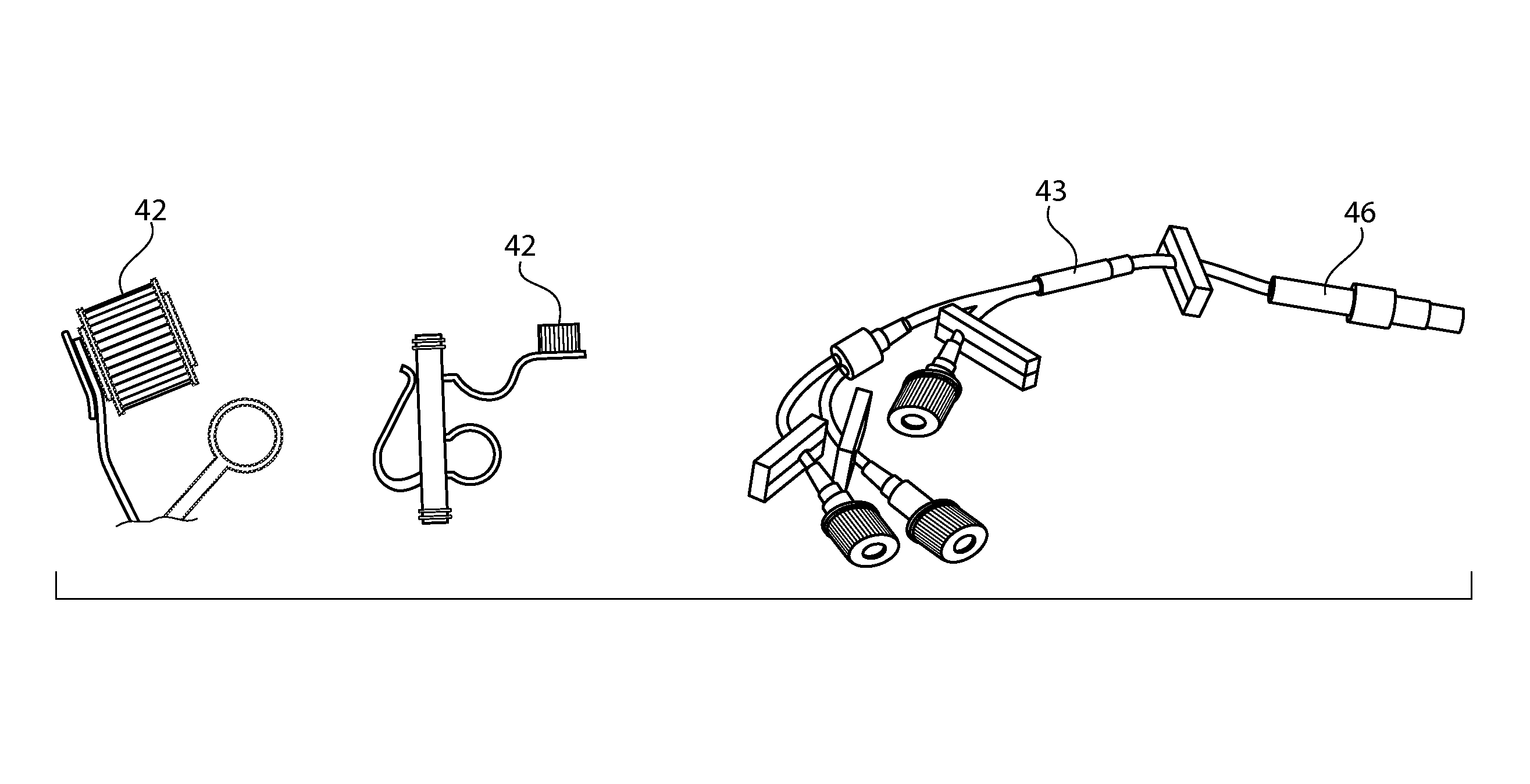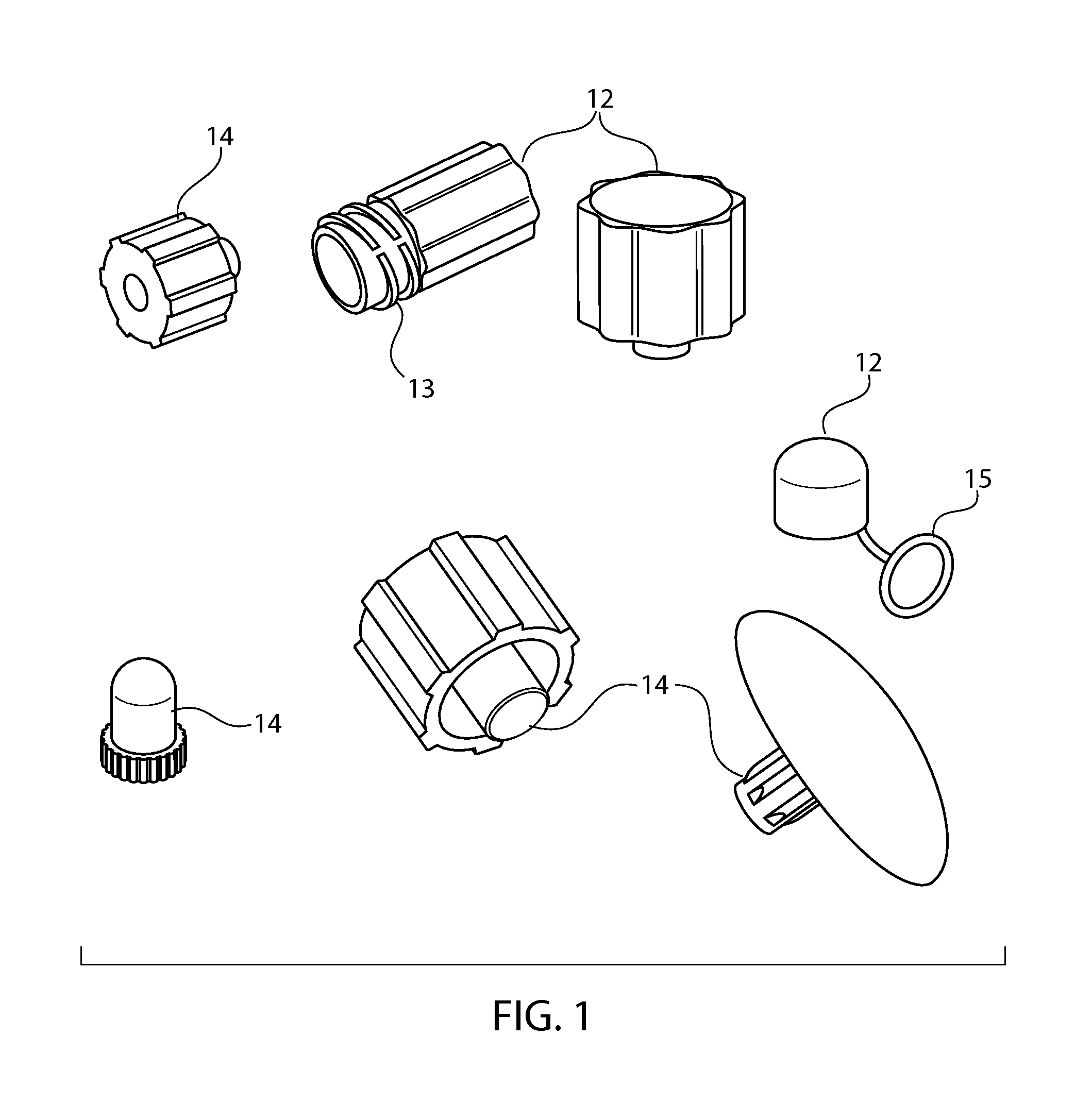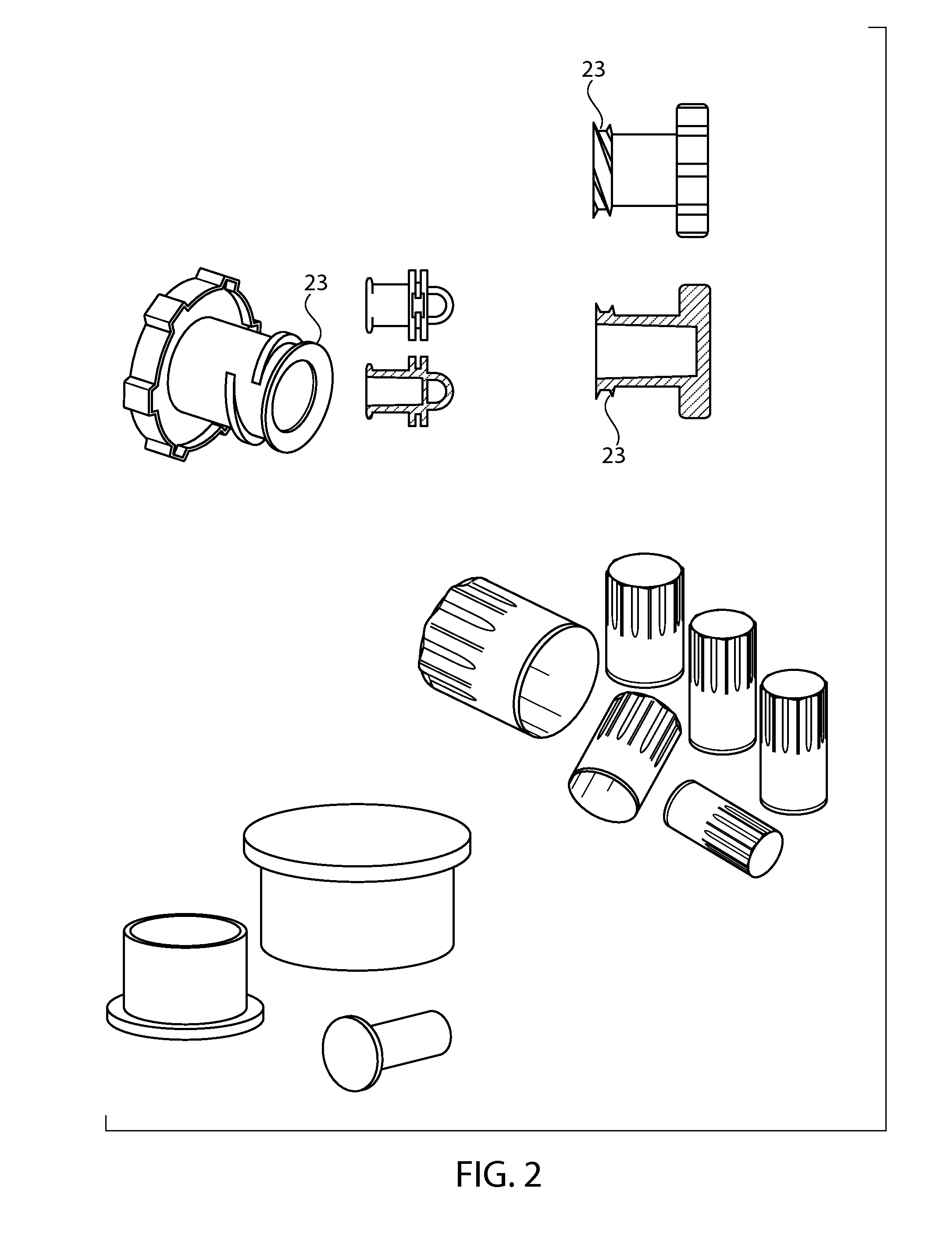Sintered porous polymeric caps and vents for components of medical devices
a technology of porous polymeric caps and medical devices, applied in the field of porous polymeric caps and vents for components of medical devices, can solve the problems of health care-associated infection (hai), create a huge cost for healthcare, incomplete or unacceptable disinfection, etc., and achieve the effect of reducing or eliminating the labor of medical personnel, facilitating liquid flow, and facilitating the passage of fluid
- Summary
- Abstract
- Description
- Claims
- Application Information
AI Technical Summary
Benefits of technology
Problems solved by technology
Method used
Image
Examples
example 1
Air Flow (Gurley) and Bacterial Filtration Efficiency (BFE) for Different Sintered Porous Media for Use in Caps and Vents
[0179]Table 1 presents data for air flow (Gurley) and bacterial filtration efficiency (BFE) for different sintered porous media. These materials are examples for a porous cap. Other materials or combinations of other materials can be made into porous caps for the purposes of this invention. Gurley numbers were measured by 4340 automatic densometer.
[0180]The test data were the number of seconds for 100 ml of air passing through a 0.1 square inch orifice at 4.88 inch water pressure. TPTT means too porous to test, indicating the porous media is very open to the air. BFE data were collected following ASTM F2101 method. The data indicate that sintered porous media can significantly reduce the bacterial penetration through the media and allow the gas the pass through. Sintered porous media have much higher air flow than traditional medical packaging materials, such as T...
example 2
Antimicrobial Properties for Sintered Porous Media with Chlorhexidine (CHX) Additive
[0183]Tables 2-4 list antimicrobial properties for sintered porous media with chlorhexidine (CHX) additive. The data indicate sintered porous media are effective to kill HAI related microbes. These sintered media are made of UHMWPE and alloys of polyethylene and chlorhexidine.
[0184]
TABLE 2Sintered porous media anti-Staphylococcus aureus properties basedon the JIS 2801 test.24 hrs%LogProductInitial CFUCFUReductionReductionNegative control3.3 × 1063.7 × 106−13−0.05Sintered Porous3.3 × 1063.4 × 106−2−0.01media withoutCHXSintered porous3.3 × 106>99.994>4.22media with 1%CHXSintered porous3.3 × 106>99.994>4.22media with 2%CHX
[0185]These sintered media are made of UHMWPE and alloys of polyethylene and chlorhexidine.
[0186]
TABLE 3Sintered porous media anti-E coli properties based on the JIS 2801 test.24 hrs%LogProductInitial CFUCFUReductionReductionNegative control2.4 × 1062.9 × 107−1212−1.12Sintered porous2....
example 3
Ethylene Oxide Comparative Resistance Test
[0189]Four types of sintered porous plastic caps were made under normal sintering conditions. The caps were designed to fit 7 ml scintillation glass vials (VWR, Radnor, Pa.). The interior of each glass vial was inoculated at one site with a population of at least of 1.0×106 colony forming units (CFU) / site of Bacillus atrophaeous with Steris® Spordex spore strip. (BI means biological indicator) After inoculation, each glass vials was assembled with a porous cap or without a cap and packaged in a 4″×9″ Tyvek® pouch. All samples were sterilized in a STERIS® model 3017 unit 100% EO sterilizer with following conditions:
Conditioning Phase Set point:
Temperature: 54.0° C.
Initial Vacuum: 1.3 pounds per square inch absolute (psia)
Relative Humidity (RH): 50%
Steam Swell Time: 60 minutes
Exposure Phase Set Points:
Temperature: 54.0° C.
Sterilant Set point: 7.8 psia
EO Concentration: 600 mg / L
Gas Dwell Time: 5, 15, 30, 60, 90 and 18...
PUM
| Property | Measurement | Unit |
|---|---|---|
| porosity | aaaaa | aaaaa |
| pore size | aaaaa | aaaaa |
| density | aaaaa | aaaaa |
Abstract
Description
Claims
Application Information
 Login to View More
Login to View More - R&D
- Intellectual Property
- Life Sciences
- Materials
- Tech Scout
- Unparalleled Data Quality
- Higher Quality Content
- 60% Fewer Hallucinations
Browse by: Latest US Patents, China's latest patents, Technical Efficacy Thesaurus, Application Domain, Technology Topic, Popular Technical Reports.
© 2025 PatSnap. All rights reserved.Legal|Privacy policy|Modern Slavery Act Transparency Statement|Sitemap|About US| Contact US: help@patsnap.com



